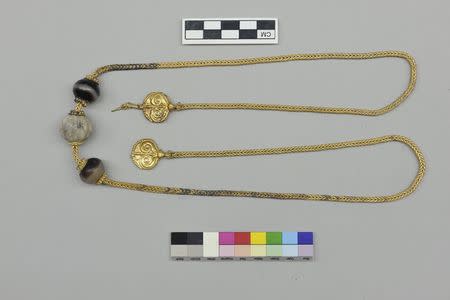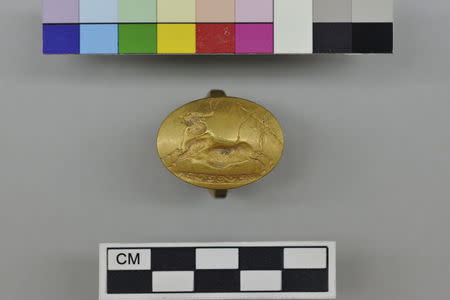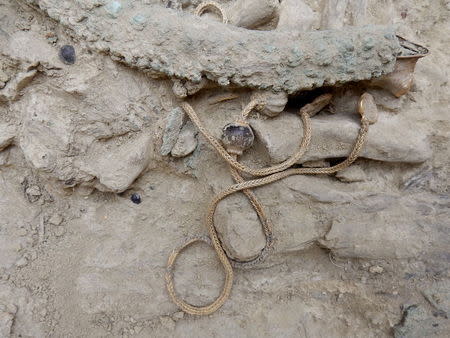3,500 year-old jewelry haul shows opulence of prehistoric Greek burials
ATHENS (Reuters) - Archaeologists in southern Greece have discovered gold signet rings and a chain, gold and silver goblets, a sword and over 1,000 fragments of semi-precious stones in a tomb believed to date back to 1,500 B.C., the Greek Culture Ministry said. "It is the most impressive display of prehistoric funerary wealth in mainland Greece which has come to light in the past 65 years," it said on Monday. The discovery was made by American archaeologists working in the Pylos region in the southwest Peloponnese this summer. The jewelry and weapons are thought to have been used to surround the shroud, placed in a wooden casket, of a warrior aged 30 to 35, likely a prominent figure of his time in the early Mycenaean period, the ministry said. "The placement of so many jewels at a man's grave also challenges the widely held conviction that jewels were mainly used in women's burials," the ministry quoted archaeologists Jack L Davis and Sharon R. Stocker from the University of Cincinnati as saying. (Reporting By Michele Kambas; Editing by Hugh Lawson)



